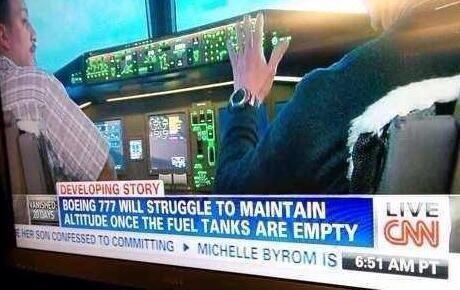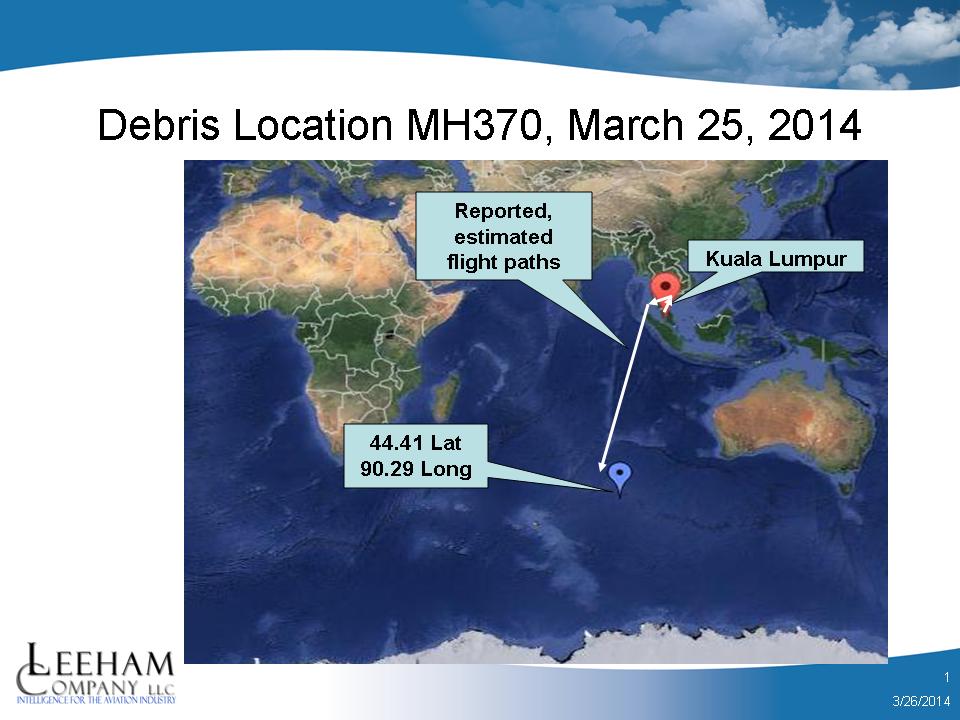Leeham News and Analysis
There's more to real news than a news release.
GE engines faces challenge from PW, RR GTF technology
The recent announcement by Rolls-Royce that their future engines will contain gearboxes has put GE and its CFM partner SAFRAN under considerable pressure.
GE/SAFRAN were together with Rolls-Royce proponents to go directly from Direct-Drive turbofans to Open Rotor designs for the next generation aircrafts. This left Pratt & Whitney as the only major engine manufacturer promoting high by-pass ratio geared turbofans as a better alternative for these aircrafts. With the Rolls-Royce announcement of Advance for 2020 (Carbon fanned tri-shaft) and Ultrafan (Geared big fan) for 2025, this has all changed. Suddenly Pratt & Whitney has strong support in their strategy and GE/SAFRAN stand out as loners.
By honing key technologies in their traditional two shaft turbofans GE, and GE/SAFRAN in CFM, have built a market leading position in all thrust classes, Regional (CF34), Single Aisle (CFM56) and Dual Aisle (CF6, GEnx, GE90). Their declared next step was Open Rotor for future Single Aisle while keeping Direct-Drive for larger engines.
Airbus and Snecma continue to research open rotor technology. Aviation Week has this story.
Now this solid position is threatened. The geared architecture has won the future regional market (CSeries, MRJ, E-Jet E2 goes PW GTF), market parity on the A320neo family and the 757 replacement studies by Boeing (dubbed NAS, New Airplane Study) will not go Open Rotor as Open Rotor only works up to M 0.75 and the 757 replacement will likely fly over 4,000nm, necessitating higher cruise speed. The NAS will thereby favor a geared turbofan instead of Open Rotor. Why not Direct-Drive? There are two major reasons:
- A geared design allows higher by-pass ratios and thereby higher propulsive efficiency without the engine being too heavy from its large low pressure turbine needed to drive a high BPR fan.
- A geared design can allow the big fan to rotate slowly and with a low pressure ratio. This creates a low noise engine, a very important feature for aircrafts operating out of noise troubled airports.
GE/SAFRAN has shown with their CFM LEAP project that they can match the efficiency levels of a geared engine like Pratt & Whitney’s GTF, using its superior hot section technology to achieve the high efficiency. It cannot achieve the low noise levels of a geared fan however; engine noise stands in direct relation to fan rotational speed and pressure ratio.
It will thereby be the environmental factors that will put the most stress on GE/SAFRAN’s present strategy. Having lost the regionals to the geared camp, will it also lose the next generation short/medium haul? It will be interesting to watch the GE/SAFRAN over the next 18 months: does it change strategy or not? If one goes by the recent words of GE Aviation President David Joyce (who spoke at last week’s opening of their Indiana LEAP factory), he thinks his present line-up is fine for a 757 replacement, and he sees no urgent need for new developments.
By Leeham Co EU
More A350-800 orders vanish
Twelve more Airbus A350-800 orders vanished as Aircraft Purchase Fleet canceled, according to the latest tally from Airbus. APF is the special purpose company set up for Alitalia Airlines, which is a financial basket case and probably couldn’t finance a Piper Cub, let alone an A350. In this case, the -800s were not upgraded to -900s or -1000s, according to the monthly Airbus Orders and Deliveries tally. There are now just 34 A358s in backlog.
The shrinking backlog further suggests the need for a refresh of the A330 with a re-engine, in our view. Without the A350-800, Airbus won’t have a competitor in the 250 seat sector that has any current technology. An A330neo with new engines would at least fill some of this void.
Meantime, Delta Air Lines issued a Request for Proposals for 50 wide-body aircraft to replace its aging Boeing 747-400s and some 767-300ERs. Delta’s CEO has said he could be interested in the A330neo. Delta eschews new technology, preferring “proven” technology, which could work against the Boeing 777X powered by an entirely new engine. By the time Delta would be ready to take delivery of its order, the A350XWB and its new technology will have been in service for many years. Delta has a deferred order for the Boeing 787-8 it inherited from Northwest Airlines, and this technology will be mature by the time Delta would be able to take delivery, so the 787 family could be in the mix. So could an A330neo, which would most likely be powered by one of the 787’s engine options, the GEnx or the Rolls-Royce Trent 1000 TEN. Market intelligence tells us Delta is pushing the GEnx, given its strong relationship with GE.
Putting the MH370 search in perspective–literally
The search area for Malaysian Airlines Flight MH370 now encompasses an area the size of Oregon. So we pulled it up on Google Earth and marked the Portland International Airport. You can’t see the airport let alone a Boeing 777. This illustrates the task at hand.
Then we zoomed in on PDX Airport, though we don’t know what “altitude” this represents; we’re not smart enough to take a measurement of the airplanes (a known size) and extrapolate to compute the altitude–we’re sure some of our readers are.
Read the Comment from Andrew about the altitude (and our response).
Odds and Ends: No butts about it; 737 Norway to Houston; MH370
No butts about it: Flight Global has this story (free registration required) about the Airbus campaign for an international seat width standard. But while Airbus is touting comfort, it’s now promoting five abreast in the center section of its A380 economy section, reducing the 18.5 inch seating to 18 inches. The London Telegraph has this story on seat width and other stuff related to the increasingly crowded cabins.
737 Norway to Houston: No, this isn’t a type. The USA Today explains.
Tossing a lawsuit: An Illinois judge tossed the first lawsuit filed in connection with Malaysian Airlines Fight MH370 and threatened sanctions on the law firm that filed it.
And this has become indicative of CNN’s breathless, sometimes ridiculous coverage of MH370:

While Greg Feith thinks a probable cause of MH370’s disappearance may not be solved, another former NTSB member has a different opinion. John Goglia, however, was a board member, not an investigator, although he was a US Airways accident investigator.
MH370 wreckage, probable cause may never be found, says ex-NTSB investigator
During the three weeks since Malaysian Airlines Flight MH370 disappeared, “talking heads” (including our own) have become a staple on the news and cable 
Source: Aviation Week
shows. The trouble with talking heads is that short sound bites don’t really allow us to take a deep dive into the issues.
We arranged to have an extended interview with Greg Feith, a former investigator for the National Transportation Safety Board and today a consultant for private industry and another of the talking heads. Feith investigated two accidents that may have particular relevance to MH370: the pilot-suicide crashes of Egyptair 990 and a Silk Air 737 in Indonesia. He’s familiar with the national cultures involved and events leading to conclusions of these two previous incidents. Feith early in the MH370 events concluded this incident has its roots in the cockpit of the Boeing 777.
He’s appeared throughout the MH370 search on CNN and NBC, among other places. Here is our interview with Feith.
A former lead crash investigator for the US National Transportation Safety Board (NTSB) doesn’t believe the wreckage of Malaysian Airlines Flight MH370 will ever be found—and with it, the data recorded on the black boxes will be lost to the investigation.
“I hope I am wrong but I personally don’t believe we will ever find the wreckage. I think we will find pieces that drifted,” Greg Feith, the investigator, said in an exclusive interview with Leeham News and Comment.
Sequence of Events of MH370 and the probabilities
The mystery of Malaysian Airlines Flight MH370 continues, as the search area today shifted nearly 700 miles to the northeast following continued analysis of known data of the flight.
Investigative focus also is on the pilot of the flight, while others continue to support mechanical, fire or depressurization theories.
We felt from the second day this was a criminal act of some kind, not some issue with the airplane. The information, we felt, clearly pointed to movements of the airplane as a result of someone in command control of the Boeing 777.
We put together this sequence of events that, to us and apparently also to investigators, that we believe points to no other explanation but human intervention.
Filling the production gap for A330 and 777 Classic: huge challenge ahead
Two orders were announced this week for the Airbus A330 and Boeing 777-300ER, important for filling the production gaps of each airplane. In the aggregate, the current backlogs go through 2016, though in reality, they stream beyond that date. See our charts below.
Airbus announced an order for 27 A330s from China, but these were the airplanes long frozen in the push-back by China against Europe in the emissions trading scheme objected to by China and a number of other countries. China routinely freezes airplane orders (among other commercial deals) to express its political displeasure.
At current production rates for the A330 or 10/mo, this adds 2.7 months to the Airbus backlog, but offset with deliveries, the aggregate backlog (i.e., if all deliveries were bunched together) means the backlog ends in 2016. With the Chinese order, Airbus announced 31 sales year-to-date.
Large debris field spotted in MH370 search–is it from the airplane?
A large debris field has been spotted in the search for Malaysian Airlines flight MH370. A satellite from Airbus Defence and Space photographed 122 large and small pieces of something. Searchers are en route to eyeball and recover this to determine if the debris is from the plane.
We plotted the location and created this image to further illustrate the remoteness of the location. This is at the edge of the potential search zone we plotted shortly after the airplane disappeared.
We also added the reported and estimated flight paths, though we were unable on this scale to include the several reported turns within the Strait of Malacca area. There are distinct turns from the intended flight path (and several more within the Strait of Malacca that were reported) which, to us, indicates a pilot-in-command of some kind, rather than a “ghost” airplane.
As we linked yesterday, former pilot John Nance believes a criminal act took illegal command of the airplane and then once on the southward tract put the plane on auto-pilot and then depressurized the airplane, killing all on board. The Boeing 777 then flew south to fuel exhaustion.



